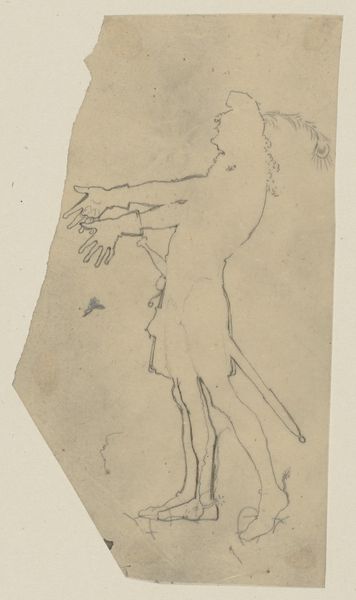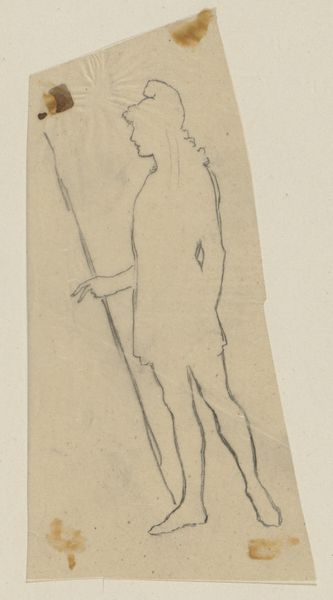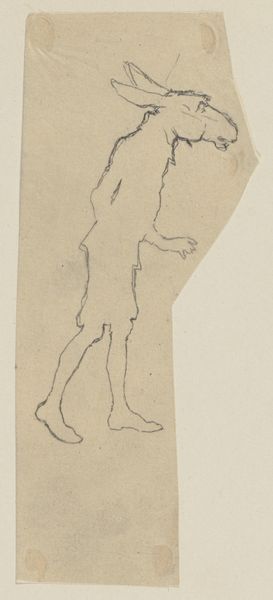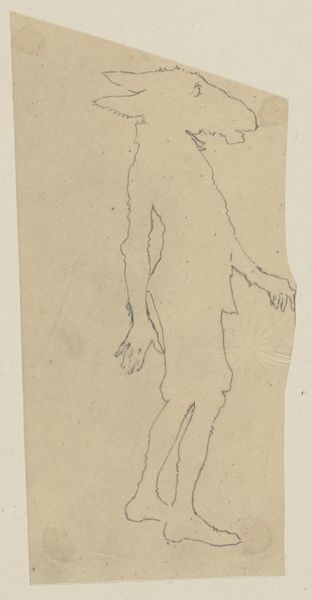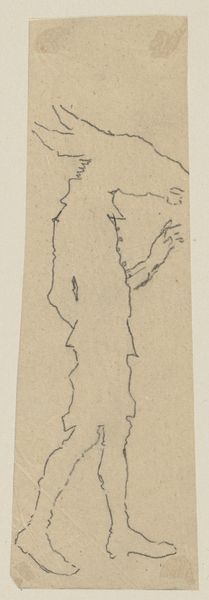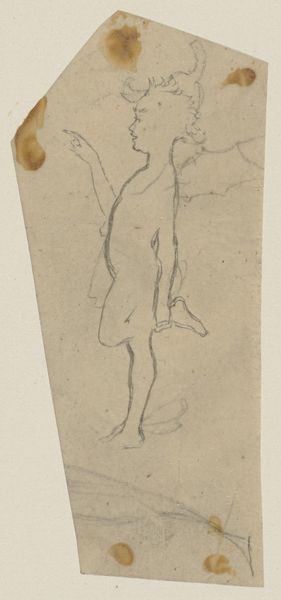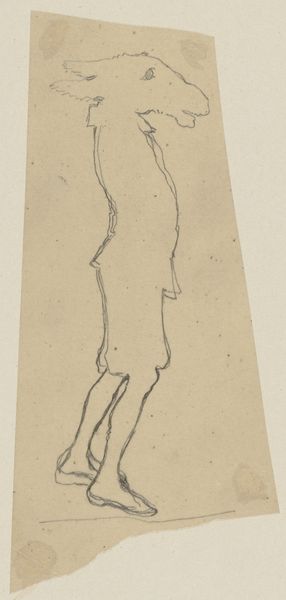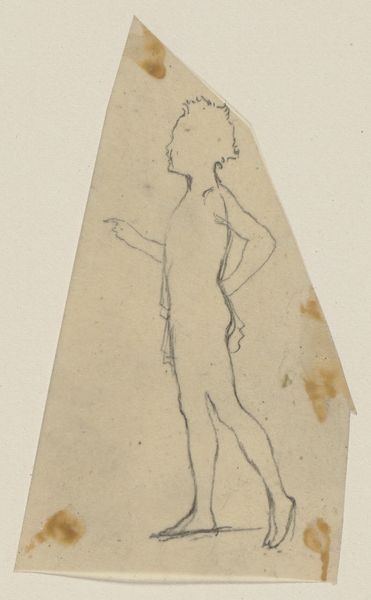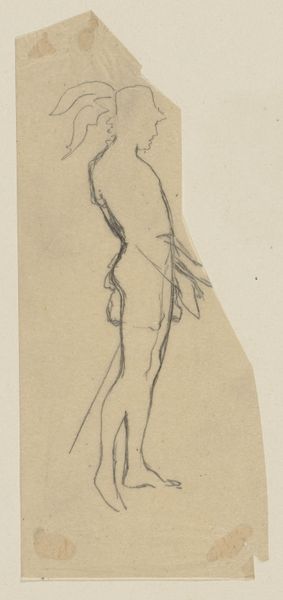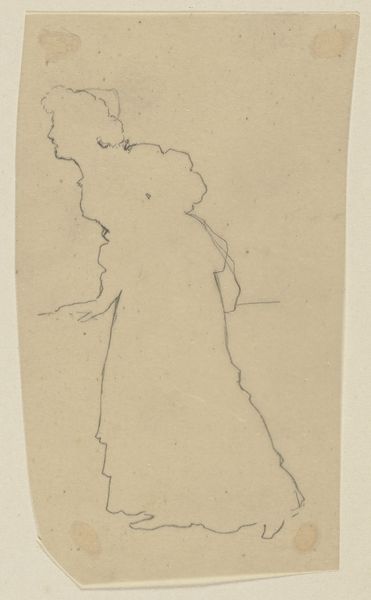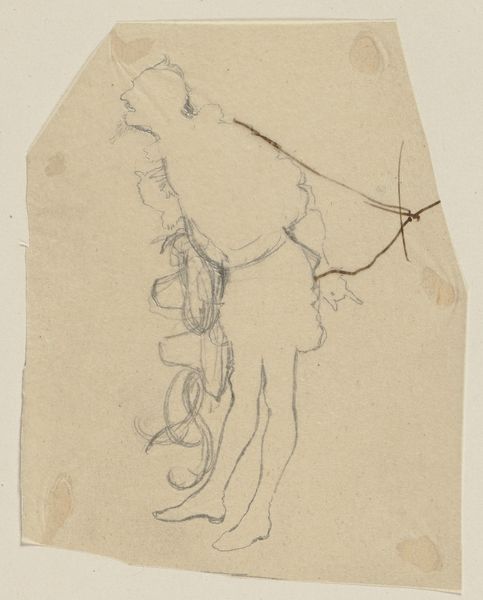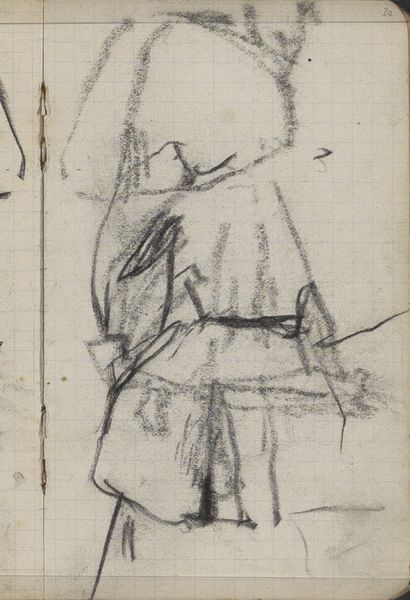
Copyright: Public Domain
Curator: This pencil drawing is titled "Nick Bottom mit Eselskopf, stehend, nach rechts," which translates to "Nick Bottom with Donkey Head, Standing, to the Right." Paul Konewka created it around 1867-1868. Editor: Immediately, the sketch-like quality strikes me; it’s economical with line but delivers a clear, if unsettling, image. The stark simplicity against the paper adds to the strangeness of the figure. Curator: The figure does carry considerable weight. Konewka was likely inspired by Shakespeare's "A Midsummer Night's Dream." Bottom’s transformation reflects the play’s exploration of identity, power, and the blurring of human and animal natures, touching on themes of social status and the grotesque. Editor: Indeed, grotesque! Yet the form is well balanced and stable for such an awkward construction, the proportions, even altered as they are, retain an elegance. The economy of line—particularly how he's suggested the musculature of the legs—suggests confident skill. Curator: And this transformation highlights the anxieties around class and appearances. Bottom, a common weaver, is thrust into a world of magic and nobility, only to be ridiculed and exploited. The donkey head could be interpreted as a commentary on the dehumanizing effects of social hierarchy. Editor: True, one could see this critique as reflecting a deeper cultural unease of the period, but aesthetically, it’s the treatment of light and shadow through line that captures my attention. See how he implies form with so little modulation. The tension this creates elevates what could have been merely a comical study. Curator: I agree. And when viewing Konewka’s work, one cannot ignore the context of growing industrialization. Perhaps Bottom's transformation into a beast of burden echoes the exploitation of the working class, literally turning them into animals for labor. Editor: I appreciate the additional societal dimensions this opens for interpreting the work. Now, returning to the interplay of form, line and subject, I must concede, it leaves one with more unease than initial awe! Curator: By exploring the historical context alongside these aesthetic qualities, this artwork becomes more than just an illustration—it invites dialogue about societal power dynamics that still reverberate today. Editor: Ultimately, the sketch is compelling not just for its subject or execution but the potent balance of its parts, producing more impact than the medium would lead one to expect.
Comments
No comments
Be the first to comment and join the conversation on the ultimate creative platform.

